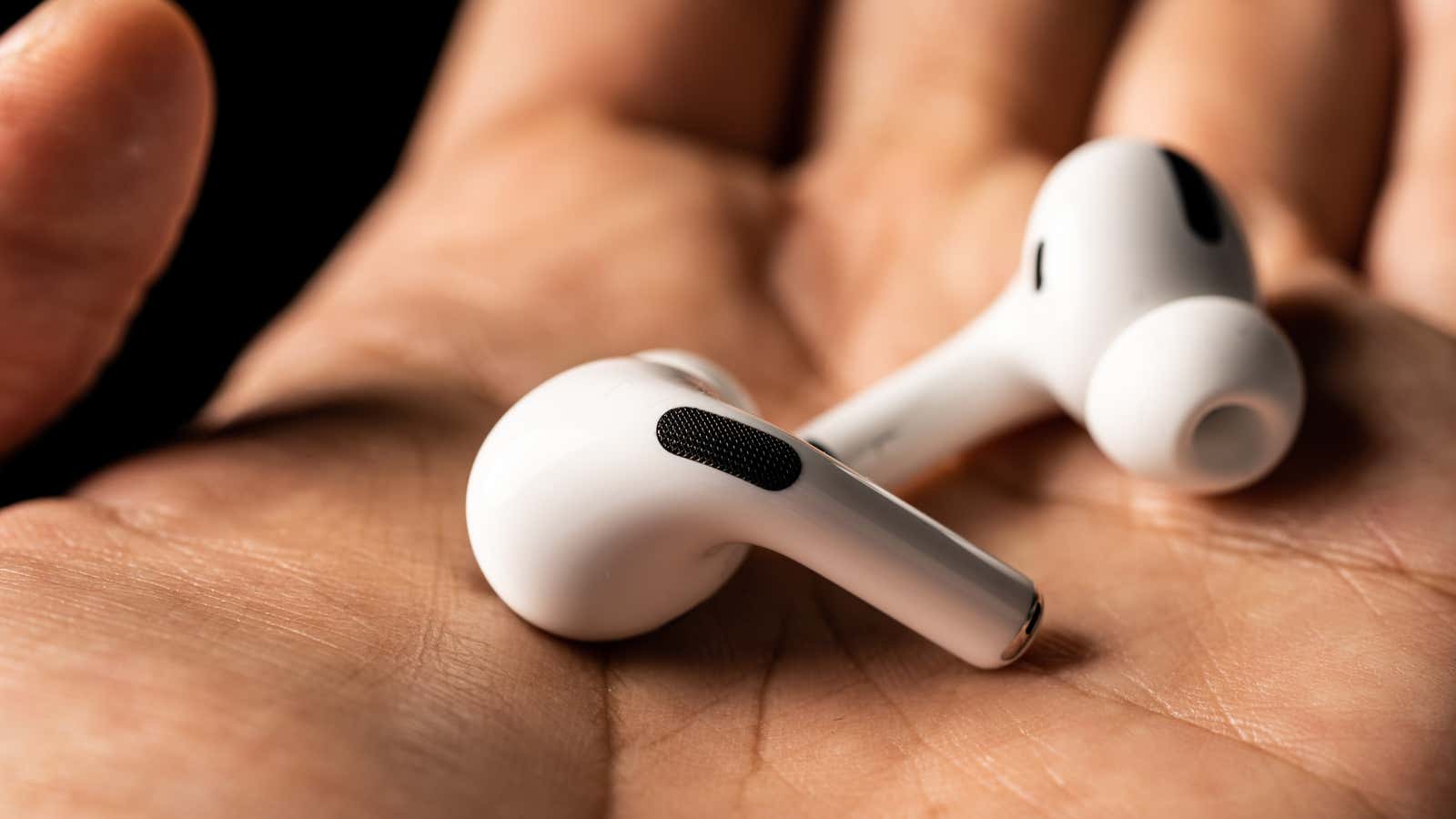Which Apple Devices and Video Services Support “spatial Audio” on AirPods Pro?

I would by no means call myself an audiophile, but I can say that I generally hate “virtual” surround sound because of the strange artificial quality it can create in your stereo environment and / or headphones. However, I abandon this judgment when it comes to Apple’s new Spatial Audio setup for AirPods Pro; it sounds awesome and you should play with it ASAP.
What hardware do you need to try Spatial Audio
To get started, you’ll need iOS 14 or iPadOS 14, both of which are out today, and a phone or tablet powerful enough for this feature to work. Supported iPhones include :
iPhone 7, iPhone 7 Plus, iPhone 8, iPhone 8 Plus, iPhone X, iPhone XS, iPhone XS Max, iPhone XR, iPhone 11, iPhone 11 Pro, iPhone 11 Pro Max, or iPhone SE (2nd generation).
Supported iPads include :
iPad Pro 12.9-inch (3rd generation) or later, iPad Pro 11-inch, iPad Air (3rd generation), iPad (6th generation) or later, or iPad mini (5th generation).
And of course, you’ll need a pair of AirPods Pro. (Regular AirPods are not compatible.)
How do I show spatial audio?
So here’s the fancy part. Your AirPods Pro will also need to be updated to the new firmware to unlock spatial audio, and that’s not something you can force by pressing a button. I’ve tried various things I read about on the internet to get the update going, including the process outlined in these tweets:
It didn’t work for me when I tried it, but I noticed that after using my AirPods Pro a bit last night and then plugging them in to charge next to my phone, I had a new firmware (version 3A283) when I woke up. Magic.
You’ll know you’re ready to use Spatial Audio when you click Settings> Bluetooth> i next to the AirPods Pro name and see version 3A283 (or later) pop up in the About section. chapter. You will also see a new Spatial Sound option in the settings, which is enabled by default.
You can also quickly turn Spatial Audio on and off by pulling down on the top right corner of the iPhone to open Control Center. Assuming your AirPods Pro are in your ears, you can then long press on the volume slider, which will cause a pop-up screen to appear with this at the bottom:
Tap the blue icon to turn spatial audio on or off; it is so simple. And trust me, you will hear the difference – confusing, boring stereo sound versus a more immersive (albeit artificial) experience.
What movies, TV shows, or videos can work with spatial audio?
Here’s the thing: you can have the correct firmware and hardware for Spatial Audio, but he could still do nothing, when you use it to watch videos on your device. For Spatial Audio to work, the content you are watching must have at least 5.1 surround sound. Spatial Audio does nothing with YouTube stereo sound.
Also, the app you use to view everything you watch may simply not work with Spatial Audio. It is possible that this will change in the future, or is it just some feature of iOS 14 and / or Spatial Audio, but Redditor gjc0703 has already done a number of tests to see which services work with Spatial Audio and this is what they have found so far. :
Apple TV + – Works (obviously)
Disney + – Working
HBO Max – Worker
Netflix – not working
Prime Video – Not Working
Showtime Anytime – Not Working
PBS – Not Working
TNT – Doesn’t work “
You will know if Spatial Audio is working because you will hear the sound shift slightly when you move your head, body, or phone while watching a video. This creates the illusion that sound is always coming from your device, as if it were a speaker. In practice, this is a pretty cool effect. I wouldn’t say this is a game changer or anything I would say is the only reason to choose one streaming service over the other, but it’s fun if you can try it out.
Why Fast Switching Is A Great Bonus In The Latest AirPods Pro Firmware Update
Spatial Audio is nifty and all, but I love even more another important feature that Apple introduced with this latest AirPods Pro firmware update. “Fast Switching” is known to allow you to instantly switch between different audio sources when you’re wearing your AirPods Pro.
Just make sure each of your devices has the latest operating systems – iOS 14, iPadOS 14, or macOS Big Sur (currently in beta ) – and that they’re all signed into the same iCloud account. Insert AirPods Pro, start playing audio on one device, and then plug in the other device and start playing audio on it. As if by magic, your devices will handle handoffs seamlessly. This means you no longer have to fiddle with the Bluetooth menu when you switch between Apple devices and want to keep listening to audio using AirPods Pro.